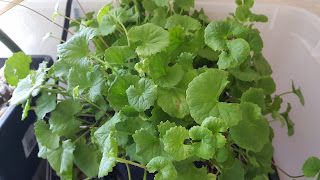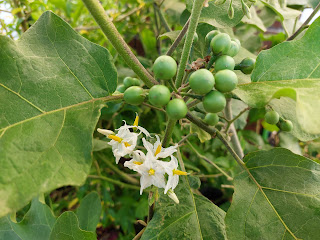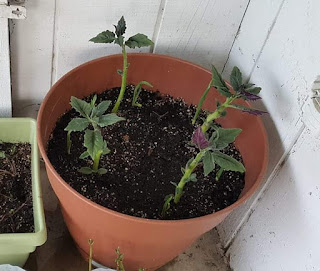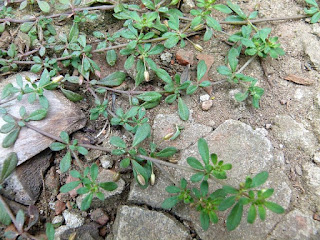ត្រចៀកក្រាញ់, Water pennywort, (Hydrocotyle umbellata)

ត្រចៀកក្រាញ់ (Hydrocotyle umbellata). Commonly known as Water pennywort, Marsh-Pennywort, Copper Coin, or Dollarweed. It's a culinary-medicinal plant that is well-loved among the Southeast Asian community. Ones known as Water pennywort seems to be in reference to the glossy, thick, and scrip leaves varieties of pennywort such as Hydrocotyle, H. americana, H. bonariensis, H. bowlesioides, H. hirsute, H. ranunculoides, and others. And, H. sibthorpioides is closely related to these guys. They look, taste, and scent very much alike. But, there's one distinctive feature on the leaves of H. ranunculoides that sets it apart from others is that its leaves are lprominently toothed with a cleft in middle where the base of leave attached to petiole, whereas the others are with subtle toothed. And, Hydrocotyle bonariensis are usually with bigger leaves than that of H. umbellata. They're are subtly toothed with a continuous circle. A native to Cambodia and neighboring countrie







